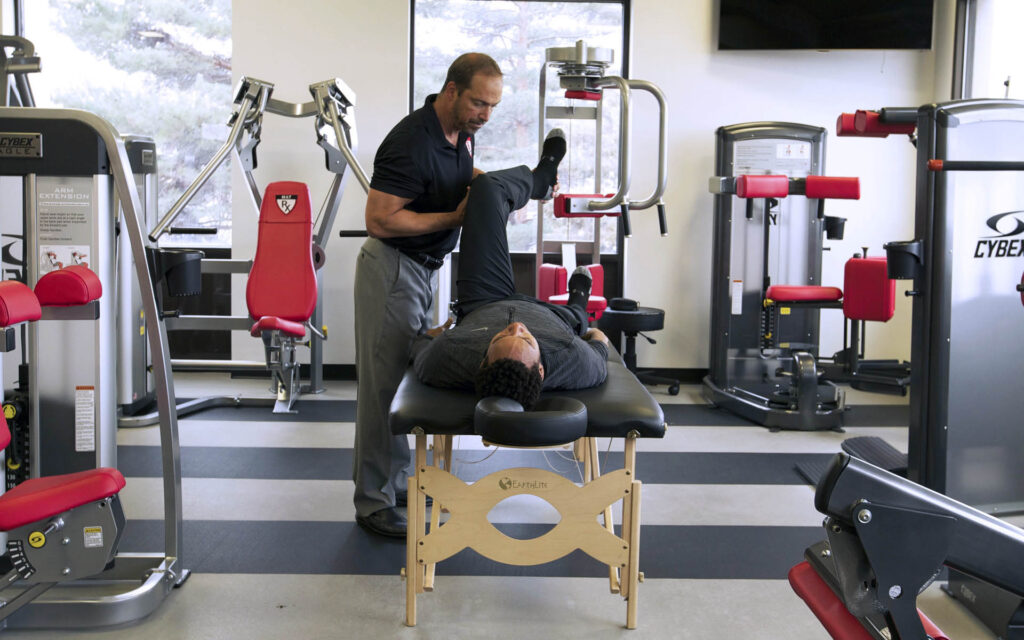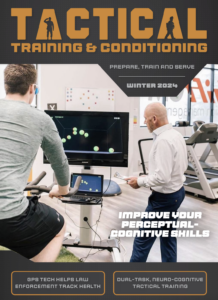Summer 2022
Tightness as a Symptom of Muscle Weakness

Greg Roskopf was 19 years old when he fractured his L5 vertebrae in his lumbar spine. The injury forced him to cut his football career short and, eventually, led him to a strength and conditioning career working with such professional teams as the Denver Broncos, Utah Jazz, San Francisco 49ers, and Denver Nuggets.
But more than all of that, Roskopf’s injury led to a breakthrough discovery in how to treat and prevent chronic pain.
He was 25 years old and could benchpress 400 pounds and squat another 500, and, yet, he was dealing with chronic pain.
“I could barely touch my knees nevermind my toes,” he recalled. “I wore knee wraps. I wore weight belts. I had orthotics. I had all these forms of external artificial stability devices to give me the support that my muscles weren’t providing for me.”
He sought out every specialist he could to find a solution to his chronic pain. And at every appointment, he noticed a through point — everyone said he was ‘tight.’ The recommendation was stretching, foam rolling, dry needling, and deep-tissue massages to loosen up the muscle and tissue. And the next day after a massage he couldn’t get out of bed due to numbness and shooting pain throughout his body.
“What was wrong with me? I understood how the body works, I worked out, and was successful in training professional athletes,” he said. “If this was how I felt at 25, what would happen at 50?”
His injury led him to develop Muscle Activation Techniques (MAT) to rewire the way his nervous system communicates with his muscle system.
“Being a range of motion (ROM) specialist, I started to see a pattern emerging: Wherever I saw limitations in ROM, there were correlating muscle weaknesses. Because of some of the negative issues I was experiencing personally through my ROM-based treatments, I thought maybe this tightness that I’ve been taught to focus on is a symptom,” Roskopf said. “Maybe the tightness relates to another underlying problem: muscle instability.”
Roskopf explains it like walking on a sheet of ice. When you do that, you tend to revert to your center of gravity and take shorter steps to avoid the risk of injury. It’s your body’s natural response to protect yourself. So, it’s easy to take this concept and apply it to the tightness you feel in your muscles.
Muscles move bones and keep them in proper alignment. If there’s a restriction it’s because the muscles that are supposed to move you in that position can’t move in that position. When muscles lose the ability to contract properly they lose the ability to move bones the way they’re designed to move.
“Structure dictates function,” he added. “And when muscles get injured they get weaker. Pain is our check engine light.”
When muscles lose the ability to contract due to stress, trauma, or overuse, muscles lose the ability to contract efficiently. When that happens they lose the ability to shorten. So when one muscle contracts, another one has to relax. So when a muscle loses the ability to contract efficiently, the other muscles will have to compensate for that and show up tight. The tightness is secondary to weakness.
That tightness you feel is a good thing as it’s an attempt from the body to protect itself. And yet, the recommendation was for Roskopf to continue to loosen up the same muscles that were tightening for protection. The American College of Sports Medicine came out with a position paper in 2011 evaluating all of the research on stretching and came to three conclusions:
- Passive stretching doesn’t change any long-term flexibility
- Passive stretching does nothing to relieve muscle soreness
- Passive stretching can decrease the force output of the muscle for up to an hour
“Why would anyone want to decrease the force output of their muscles before running a sprint? Or before a competition? Or a battle? I imagine these studies were done on college-aged student-athletes, who can bounce back from a lot of things quicker than the average person. So I was getting stretched out, forcefully increasing my range of motion and I couldn’t get out of bed,” he said.
» ALSO SEE: How to Train Like Law Enforcement
Tightness is secondary to neuromuscular weakness. And whenever you have mobility without stability you have a vulnerability to injury. It’s been reported that 55 percent of soldiers will suffer a musculoskeletal injury at one point.
“We need to teach people to move because if we’re dysfunctional sometimes functional movement can reinforce dysfunction,” Roskopf said.
To learn more about Greg Roskopf, his career, and the study of muscle activation techniques (MAT), visit gregroskopf.com.



